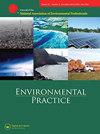Art, Environment, and Sustainability: Case Studies on the Philippine Art Practice
Q3 Social Sciences
引用次数: 0
Abstract
Art is a powerful tool for conveying ideas. It transcends various modes of communication, allowing it to trigger mental, emotional, and physical responses from its target audience. Its effectiveness as a tool for environmental advocacy, however, is limited by the sustainability of the practice and the materials used. Contemporary art practices in the Philippines have found ways to support the campaign for environmental sustainability by using repurposed materials that result in a decreased carbon footprint in the art production process, while conveying environmental themes. This evaluative article presents two case studies tackling the new-found indigenous art practice of the Talaandig tribe in the province of Bukidnon, Philippines, and the contemporary art practice of select assemblage artists from Metro Manila using found objects. This article illustrates how Filipino artists in both the indigenous and contemporary art scenes are supporting the global campaign of environmental conservation in message and action.艺术、环境与可持续性:菲律宾艺术实践个案研究
艺术是传达思想的有力工具。它超越了各种交流模式,可以激发目标受众的心理、情感和身体反应。然而,它作为环境倡导工具的有效性受到实践的可持续性和所用材料的限制。菲律宾的当代艺术实践已经找到了支持环境可持续性运动的方法,通过使用重新利用的材料,在艺术生产过程中减少碳足迹,同时传达环境主题。这篇评价性的文章提出了两个案例研究,解决了菲律宾Bukidnon省talaanddig部落新发现的土著艺术实践,以及马尼拉大都会精选组合艺术家使用发现物品的当代艺术实践。这篇文章说明了菲律宾本土艺术家和当代艺术家如何在信息和行动上支持全球环境保护运动。
本文章由计算机程序翻译,如有差异,请以英文原文为准。
求助全文
约1分钟内获得全文
求助全文
来源期刊

Environmental Practice
ENVIRONMENTAL SCIENCES-
CiteScore
0.90
自引率
0.00%
发文量
0
期刊介绍:
Environmental Practice provides a multidisciplinary forum for authoritative discussion and analysis of issues of wide interest to the international community of environmental professionals, with the intent of developing innovative solutions to environmental problems for public policy implementation, professional practice, or both. Peer-reviewed original research papers, environmental reviews, and commentaries, along with news articles, book reviews, and points of view, link findings in science and technology with issues of public policy, health, environmental quality, law, political economy, management, and the appropriate standards for expertise. Published for the National Association of Environmental Professionals
 求助内容:
求助内容: 应助结果提醒方式:
应助结果提醒方式:


